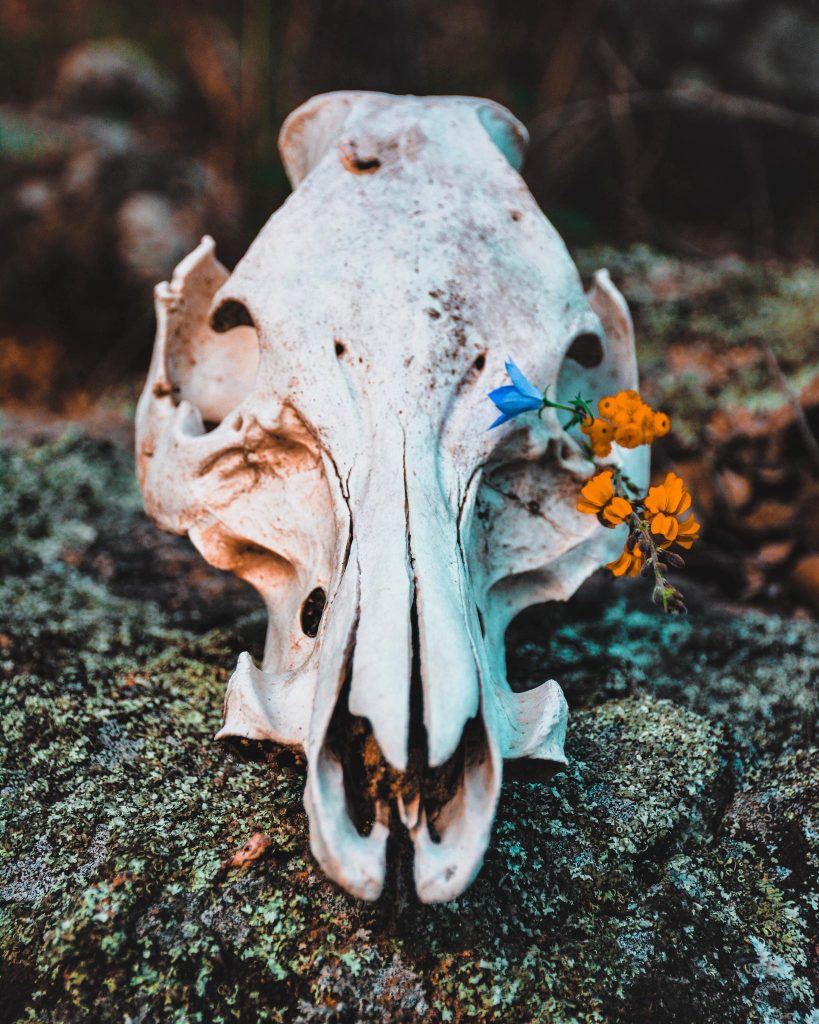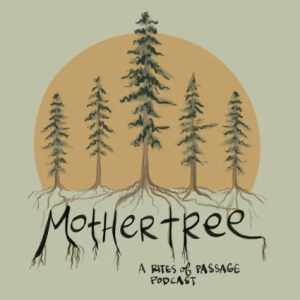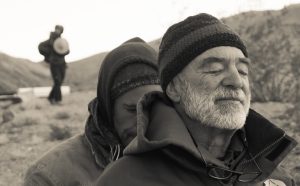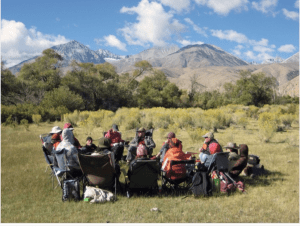
Ancestor Preparation: On Becoming a Good Dead Person

Note: This short piece has been submitted to Circles on the Mountain for publication.
For better or worse, wilderness rites of passage programs have gained a great deal of popularity over recent years. For better, because many of us have worked hard to see meaningful rites regain their importance within modern culture. We know that there is no lack of evidence that points to the social and environmental diseases brought about by a largely uninitiated adult population. And it certainly doesn’t take much effort to see that mainstream Western society is more concerned with possessions and personas than with the 7th generation, or even the present generation for that matter. For these reasons and more, the increased interest in rites of passage is a good sign that people are responding to an innate, but largely forgotten, structure for maturity and survival.
But the bad news is that we are also witnessing the commercialization of that which we hold with such sacred regard. A quick Internet search on vision questing(1) reveals just how liable these ceremonies are to being watered down into something they were never intended to be. It is not uncommon, for instance, to come across a weekend gathering advertised as a rite of passage, or a ten-day program wilderness program touted as an experience that can fill the void in one’s soul. Certainly, there is nothing wrong with weekend workshops and self-fulfillment, but neither of these expresses the enormity of an initiatory passage, which can take months, if not years, to undergo. We all know this, yet it is counter intuitive to market one’s rites of passage program as that which may foster a descent into the underworld, or produce more gut-wrenching questions than answers.

Initiation of Gilgamesh through death of Enkidu
When I really think about it, I find it astonishing that anyone in their right mind would choose to embark upon such an ordeal. Rites of passage ceremonies throughout time and place are notoriously marked with painful sacrifices, physical challenges, and, in some cases, profound loss. The purpose of a rite of passage, of course, varies depending on one’s age and circumstance, but I think it is fair to generalize that a rite of passage is primarily geared toward our need for creating (using modern psychological language) consciousness; consciousness about oneself, one’s place in the world, and about the world itself. In other words, to stay awake, to be aware, to see (inside and out)! And this kind of consciousness, as we know, is usually initially thrust upon us through painful severance, followed by a decent into those darker places. Rarely is consciousness something we choose! To confront one’s slippery shadow, blind judgments, and ultimately one’s death, all within a relatively short lifespan, is hardly a desirable undertaking. And yet, something in us gravitates toward the pull of initiation. In this regard, the function of a rite of passage is paradoxical: We inherently long for initiation, for consciousness, but would most likely avoid it we were conscious of the suffering and sacrifice it entails.
Stemming from my Judeo-Christian background, I often think of Job when contemplating a rite of passage. Here is an honorable man, who does all the “right” things, and he still gets slammed by God (or the forces of Nature, depending on your perspective). This cruelty seems like an unfair and gratuitous treatment of Job, but by the end of the story, not only is Job more conscious, humble, and wise, so is God. The story of Job is not your typical heroic quest story of good versus evil, but about Job’s surrendering to a way of being that is less ego-centric and more in tune with a humanness that is neither God nor animal, but somewhere in-between. For Carl Jung (2) , Job’s encounter with God is equivalent to a confrontation with the unconscious, a major aspect of a rite of passage, and the reason Jung can say, “God is the name by which I designate all things which cross my willful path violently and recklessly, all things which upset my subjective views, plans and intentions and change the course of my life for better or worse”(3) . I confess, when it feels as if I’ve fucked things up, which seems often enough, I find comfort in Jung’s words.
Due to God or Nature, life initiates us over and over again until we die. If consciousness is the propulsion behind initiation, then consciousness of our death is the final boon. As humans, we don’t live long. Not as long as a Bristlecone Pine, a Tortoise, or even a sea urchin. And, when we get sick or old or lose those we love, we can rest assured that we are never fully in control, but as compensation, we are given the most cherished of gifts, that of bearing witness. It is at this point that the potential for a rite of passage reveals itself, I think. And it can be heart-wrenching. The more we see the beauty of this world, and the deeper we fall in love, the greater, the sharper the loss. Consciousness can be a bitch. And yet, I don’t know anyone who would trade it in for anything less. It is an invitation to be fully alive.

Demeter and Persephone, Eleusinian Initiation Mysteries
I think this is a crucial point – that ultimately a rite of passage is not about fulfilling our greatest dreams or our fantastic potentials, but about decentering ourselves enough to see the world as it truly is. I imagine that in the old days, before artificial lighting and packaged food, our ancestors understood that if they became too self-absorbed, losing awareness of the world in which they lived, that they would perish. And this was true on both spiritual and literal levels, as there was no separation between higher and lower realms. The gods spoke in the language of rain, laughed in the blooming of flowers, exhaled with the migration of animals and birds, and rested finally in death.
Whether on a hunt, sitting atop a snowy mountain ridge, or in a hut deep in the forest, when the young initiate was taken out on their first big rite of passage, marking the transition into adulthood, they most inevitably met death in some form or another. Mircea Eliade, one of the foremost writers on initiation makes this point. Referring to the Wiradjuri children of Australia, he writes,
“For them, it [death] was an exterior ‘thing,’ a mysterious event that happened to other people, especially to the old. Now, suddenly, they are torn from their blissful childhood unconsciousness, and are told that they are to die, that they will be killed by the divinity. The very act of separation from their mothers fills them with forebodings of death – for they are sized by unknown, often masked men, carried far from their familiar surroundings, laid on the ground, and covered with branches.”(4)

It is impossible to get into the mind of a Wiradjuri initiate, to really understand what he or she feels and perceives, but I can do my best by paying attention to my own, albeit much less intense, initiatory experiences. For me, the initiatory encounters with death and loss have been a prerequisite for turning my focus toward the world. Death has forced me to ask, “What is my life about?” And almost immediately, my eyes open to a bigger realm that extends beyond myself. Meaning and purpose are found in service to that which is greater, which often lies beyond our knowing. As author Rebecca Solnit affirms in her remarkable book, “Hope in the Dark”,
“The belief that what we do matters even though how and when it may matter, who and what it may impact, are not things we can know beforehand. We may not, in fact, know them afterward either, but they matter all the same, and history is full of people whose influence was most powerful after they were gone.”
To work on behalf of people we may never know, for a world we may never see, is truly an expression of an initiated adult. Such an attitude requires some consciousness of one’s death. For me, this has not been easy. And even after twenty years since my own first wilderness fast, I am just barely beginning to understand what this rite of passage business is all about. But it is comforting to know that there are others who have gone before. And although they are no longer among us in flesh, their work continues to guide and inform.
I wonder how things might look if we advertised wilderness rites of passage programs as ancestor preparation – that ultimately, we are preparing others and ourselves to be good dead people! Not only would this completely take us out of any possible commercial mainstream, it would highlight the seriousness and responsibility of our work as guides (in addition to providing some good humor, no doubt). When I think of Steven Foster, for instance, I think of a good dead person. I can’t say if he ever filled that void in his soul, or fulfilled his potential, but he is a damn good dead person. His spirit continues to guide and inform in ways known and unknown.
 _________________________________________________________________
_________________________________________________________________
(1) Due to its connection to Native American Peoples the term vision quest is not used at School of Lost Borders. Nearly every culture practices, or had practiced, some form of rite of passage, but few are specific “vision quests”. For more, click see https://www.britannica.com/topic/vision-quest
(2) See C.G. Jung’s essay Answer to Job (CW 11)
(3) Cited in Edward Edinger, “The Creation of Consciousness”
(4) From Rites and Symbols of Initiation: The Mysteries of Birth and Rebirth.
Share This
Related posts




